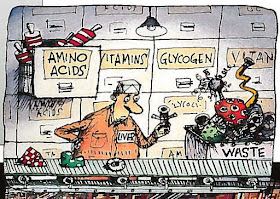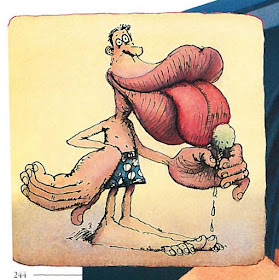 Yesterday, we took a look at the 2003 edition of the book New Everyday Science Explained, and I had a suspicion that the earlier Everyday Science Explained by Curt Suplee (National Geographic Society, 1996, ISBN 0-7922-3410-3) might have more images, and more in color (since Richard usually worked in color watercolor and never in grey washes that I can recall. I'm sure there's exceptions, but...)
Yesterday, we took a look at the 2003 edition of the book New Everyday Science Explained, and I had a suspicion that the earlier Everyday Science Explained by Curt Suplee (National Geographic Society, 1996, ISBN 0-7922-3410-3) might have more images, and more in color (since Richard usually worked in color watercolor and never in grey washes that I can recall. I'm sure there's exceptions, but...)As you'd expect from that opening, I was right, and thanks to a National Geographic contact, here are his illustrations in glorious color, along with a new dozen or so. More, bigger, and better!
Wasn't this version much nicer? Since they were already paying for full color pages, I have no idea why the publisher dropped the color on most of the images for the 2003 book.

























































